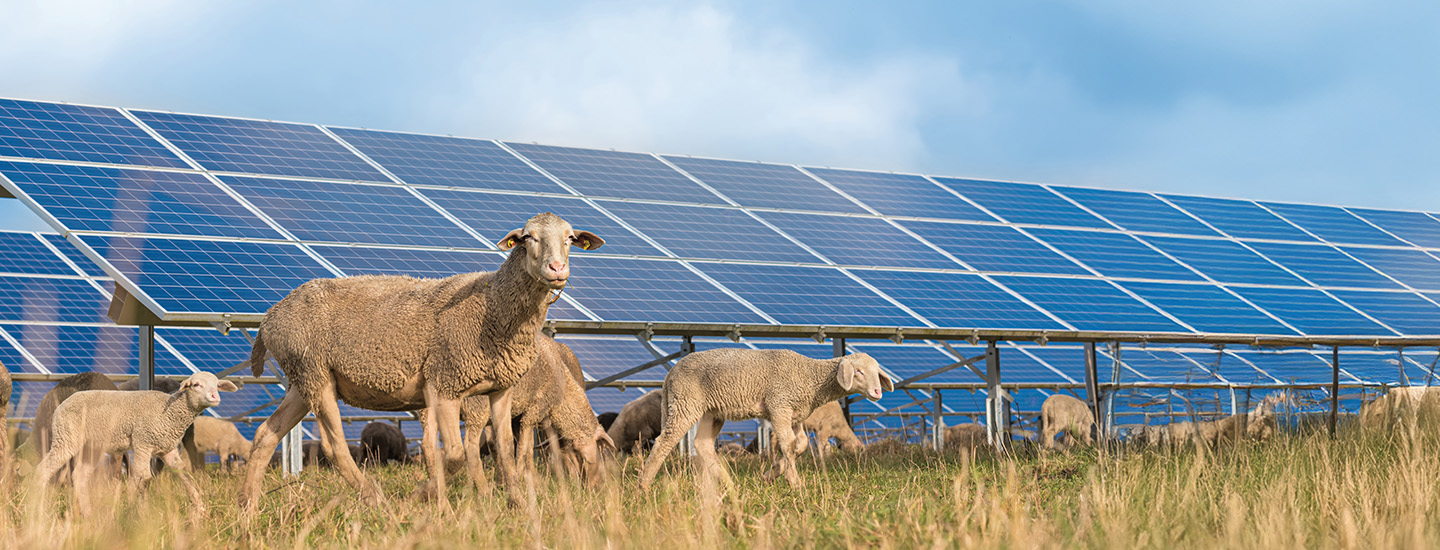Sheep are putting the “farm” back in “solar farm”! Rows of gleaming solar panels cover more than 600,000 acres of land across the U.S. While solar panels convert the sun’s rays into energy, grass and other plants are doing the same underneath through photosynthesis.
But if the land isn’t cared for, overgrown plants could damage the solar panels and create a wildfire risk. That’s where sheep come in: Power companies are hiring herds of sheep to eat the plants under the panels. This practice is called
solar grazing.
Sheep are putting the "farm" back in "solar farm"! Solar panels cover more than 600,000 acres of land across the U.S. The rows of shining panels convert the sun's rays into energy. Grass and other plants under the panels also turn the sun's rays into energy. This process is called photosynthesis.
But it's important to care for those plants. If they grow too much, the plants could damage the solar panels. They could even create a wildfire risk. That's where sheep come in! Power companies are hiring herds of sheep to eat the plants under the panels. This practice is called solar grazing.

